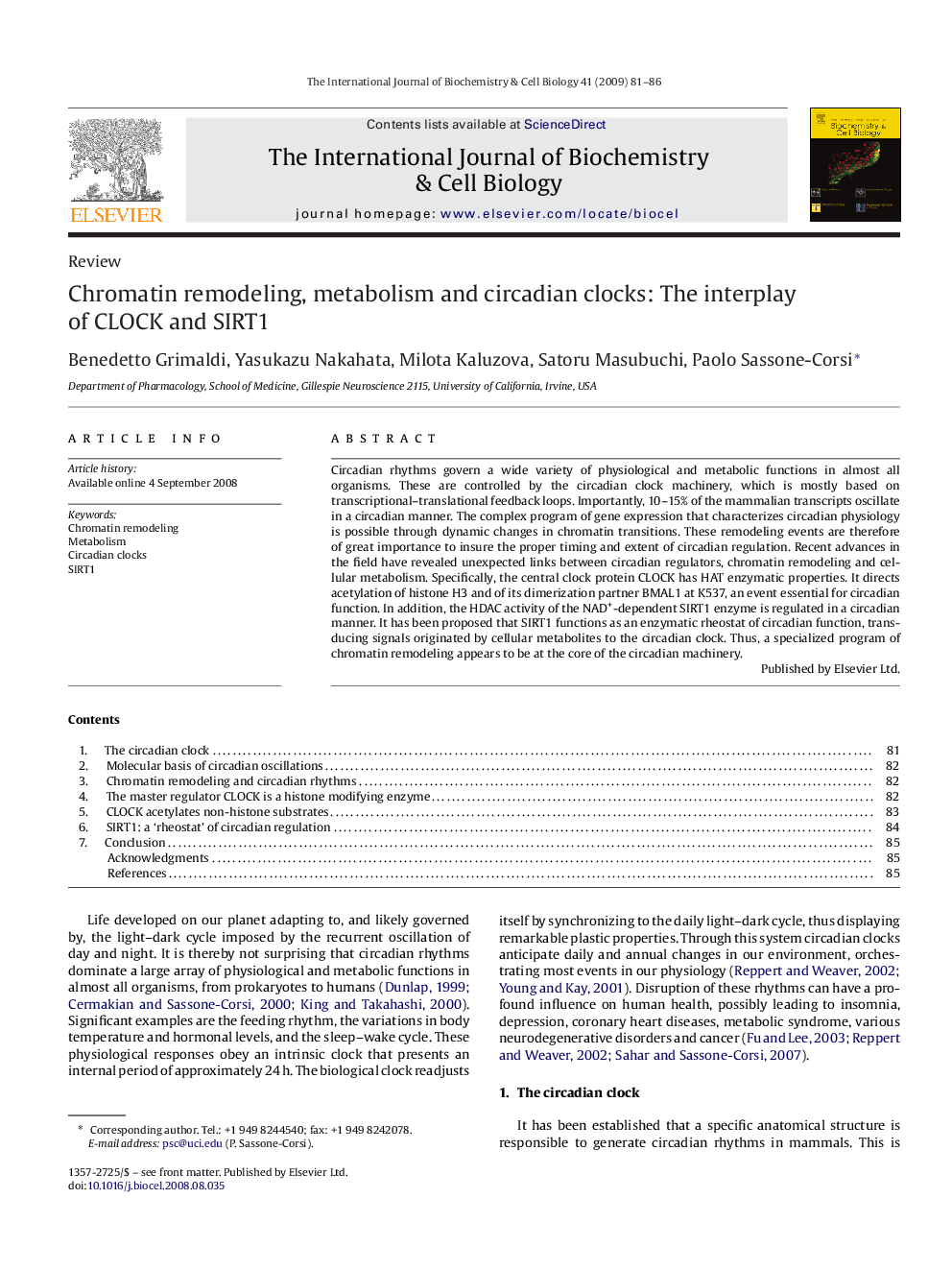| Article ID | Journal | Published Year | Pages | File Type |
|---|---|---|---|---|
| 1985188 | The International Journal of Biochemistry & Cell Biology | 2009 | 6 Pages |
Circadian rhythms govern a wide variety of physiological and metabolic functions in almost all organisms. These are controlled by the circadian clock machinery, which is mostly based on transcriptional–translational feedback loops. Importantly, 10–15% of the mammalian transcripts oscillate in a circadian manner. The complex program of gene expression that characterizes circadian physiology is possible through dynamic changes in chromatin transitions. These remodeling events are therefore of great importance to insure the proper timing and extent of circadian regulation. Recent advances in the field have revealed unexpected links between circadian regulators, chromatin remodeling and cellular metabolism. Specifically, the central clock protein CLOCK has HAT enzymatic properties. It directs acetylation of histone H3 and of its dimerization partner BMAL1 at K537, an event essential for circadian function. In addition, the HDAC activity of the NAD+-dependent SIRT1 enzyme is regulated in a circadian manner. It has been proposed that SIRT1 functions as an enzymatic rheostat of circadian function, transducing signals originated by cellular metabolites to the circadian clock. Thus, a specialized program of chromatin remodeling appears to be at the core of the circadian machinery.
